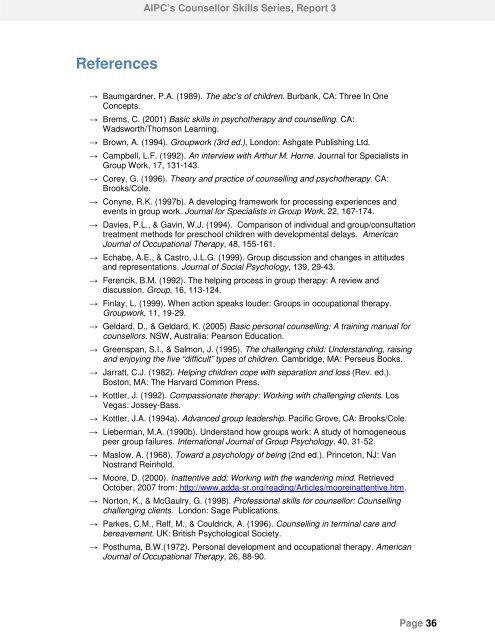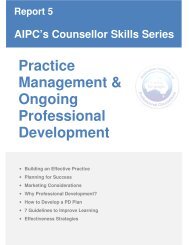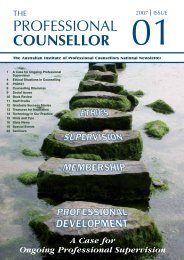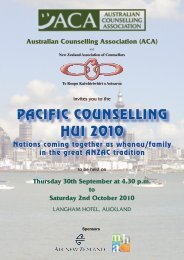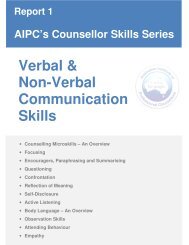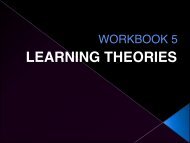Why Diversity? - Counselling Connection
Why Diversity? - Counselling Connection
Why Diversity? - Counselling Connection
- No tags were found...
Create successful ePaper yourself
Turn your PDF publications into a flip-book with our unique Google optimized e-Paper software.
AIPC’s Counsellor Skills Series, Report 3References→ Baumgardner, P.A. (1989). The abc’s of children. Burbank, CA: Three In OneConcepts.→ Brems, C. (2001) Basic skills in psychotherapy and counselling. CA:Wadsworth/Thomson Learning.→ Brown, A. (1994). Groupwork (3rd ed.), London: Ashgate Publishing Ltd.→ Campbell, L.F. (1992). An interview with Arthur M. Horne. Journal for Specialists inGroup Work, 17, 131-143.→ Corey, G. (1996). Theory and practice of counselling and psychotherapy. CA:Brooks/Cole.→ Conyne, R.K. (1997b). A developing framework for processing experiences andevents in group work. Journal for Specialists in Group Work, 22, 167-174.→ Davies, P.L., & Gavin, W.J. (1994). Comparison of individual and group/consultationtreatment methods for preschool children with developmental delays. AmericanJournal of Occupational Therapy, 48, 155-161.→ Echabe, A.E., & Castro, J.L.G. (1999). Group discussion and changes in attitudesand representations. Journal of Social Psychology, 139, 29-43.→ Ferencik, B.M. (1992). The helping process in group therapy: A review anddiscussion. Group, 16, 113-124.→ Finlay, L. (1999). When action speaks louder: Groups in occupational therapy.Groupwork, 11, 19-29.→ Geldard, D., & Geldard, K. (2005) Basic personal counselling: A training manual forcounsellors. NSW, Australia: Pearson Education.→ Greenspan, S.I., & Salmon, J. (1995). The challenging child: Understanding, raisingand enjoying the five “difficult” types of children. Cambridge, MA: Perseus Books.→ Jarratt, C.J. (1982). Helping children cope with separation and loss (Rev. ed.).Boston, MA: The Harvard Common Press.→ Kottler, J. (1992). Compassionate therapy: Working with challenging clients. LosVegas: Jossey-Bass.→ Kottler, J.A. (1994a). Advanced group leadership. Pacific Grove, CA: Brooks/Cole.→ Lieberman, M.A. (1990b). Understand how groups work: A study of homogeneouspeer group failures. International Journal of Group Psychology, 40, 31-52.→ Maslow, A. (1968). Toward a psychology of being (2nd ed.). Princeton, NJ: VanNostrand Reinhold.→ Moore, D. (2000). Inattentive add: Working with the wandering mind. RetrievedOctober, 2007 from: http://www.adda-sr.org/reading/Articles/mooreinattentive.htm.→ Norton, K., & McGaulry, G. (1998). Professional skills for counsellor: <strong>Counselling</strong>challenging clients. London: Sage Publications.→ Parkes, C.M., Relf, M., & Couldrick, A. (1996). <strong>Counselling</strong> in terminal care andbereavement. UK: British Psychological Society.→ Posthuma, B.W.(1972). Personal development and occupational therapy. AmericanJournal of Occupational Therapy, 26, 88-90.Page 36


